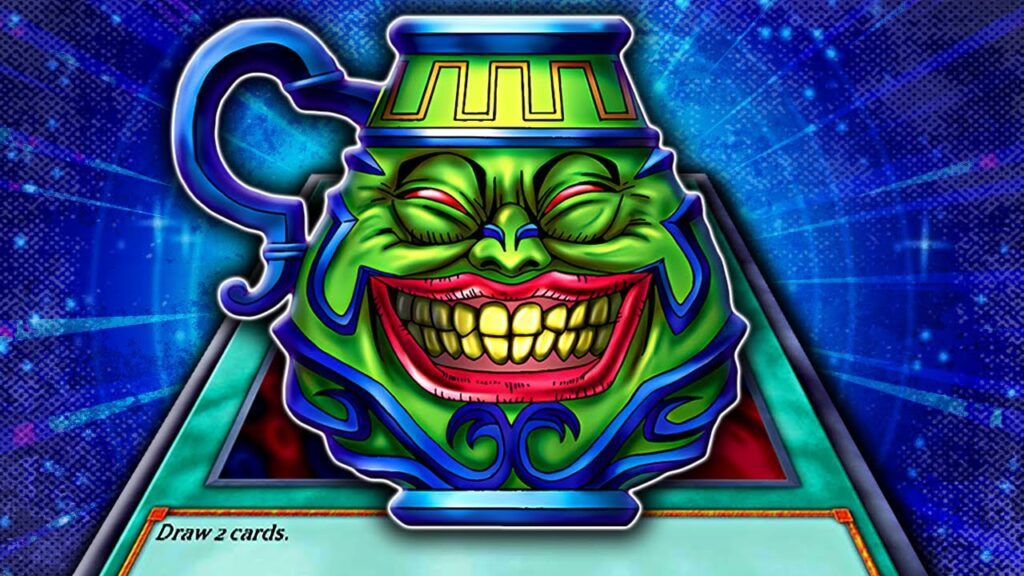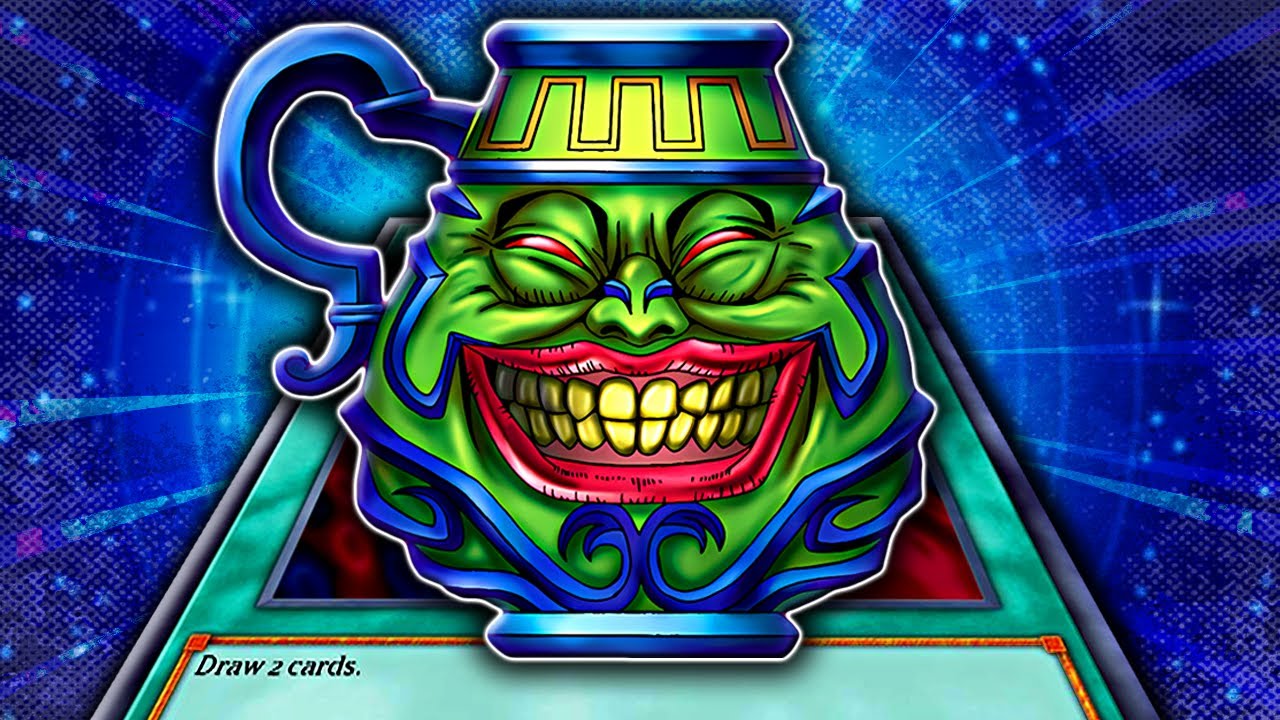
Unveiling the Pot of Greed Archetype: A Deep Dive into Card Game Dynamics
The “Pot of Greed” archetype is a ubiquitous concept in collectible card games (CCGs), representing cards or abilities that provide significant card advantage to the player who uses them. The term itself originates from the iconic card “Pot of Greed” in the Yu-Gi-Oh! Trading Card Game, which allows the player to draw two cards from their deck. This seemingly simple effect has profound implications for gameplay, strategy, and deck construction. Understanding the power and implications of the Pot of Greed archetype is crucial for any serious CCG player. This article will delve deep into the concept, exploring its variations, its impact on game balance, and its strategic considerations.
The Essence of Card Advantage
At its core, the Pot of Greed archetype is all about card advantage. Card advantage refers to having more cards in hand or in play than your opponent. This advantage translates into more options, greater flexibility, and a higher probability of drawing the cards needed to execute your game plan. Card advantage can be gained in various ways, such as destroying opponent’s cards while keeping your own, or through effects that directly add cards to your hand.
The Pot of Greed type of card is one of the most direct ways to achieve card advantage. By simply playing the card, you immediately increase the number of cards in your hand, providing you with more resources to work with. This can be especially powerful in fast-paced games where tempo and resource management are critical.
Variations of the Pot of Greed Effect
While the original “Pot of Greed” card is straightforward, the archetype has evolved into numerous variations across different CCGs. These variations often come with conditions, restrictions, or additional effects that balance their power. Here are some common examples:
- Conditional Draw: These cards require specific conditions to be met before they can be used to draw cards. For example, a card might allow you to draw cards only if you control a certain type of monster or if your opponent has more cards in hand than you.
- Discard Draw: Some cards require you to discard one or more cards from your hand to draw a larger number of cards. This can be a powerful way to filter your hand and find specific cards, but it also comes with the risk of discarding valuable resources.
- Delayed Draw: These cards might not provide immediate card advantage, but instead, create a delayed effect that draws cards at the beginning of your next turn or after a certain number of turns.
- Draw and Discard: Similar to discard draw, these cards allow you to draw a card, and then require you to discard a card. These often are used to cycle through the deck, looking for a specific card.
- Graveyard Draw: These cards allow you to return cards from your graveyard to your hand.
Each of these variations presents different strategic considerations. Conditional draw cards require careful deck building and game planning to ensure that the conditions are met consistently. Discard draw cards demand a balance between filtering your hand and conserving valuable resources. Delayed draw cards require careful planning to protect yourself while waiting for the delayed effect to trigger.
The Impact on Game Balance
The Pot of Greed archetype can have a significant impact on game balance. Cards that provide easy card advantage can warp the metagame, leading to decks that focus solely on drawing as many cards as possible to find their key combos or win conditions. This can create a homogenous and predictable gameplay experience, reducing the diversity of viable strategies.
To mitigate these risks, game designers often implement several balancing mechanisms:
- Rarity: Limiting the availability of powerful draw cards by making them rare can help to control their impact on the metagame.
- Restrictions: Restricting the number of copies of a particular draw card that can be included in a deck can also help to limit its power.
- Costs: Requiring players to pay a significant cost, such as life points or resources, to use draw cards can make them less appealing in certain situations.
- Limitations: Cards are often limited to the number of cards they can draw.
Careful consideration of these factors is crucial to ensure that draw cards remain powerful tools without becoming game-breaking elements.
Strategic Considerations
Using the Pot of Greed archetype effectively requires careful strategic planning. Here are some key considerations:
- Deck Construction: The decision to include draw cards in your deck should be based on the overall strategy and win condition. Decks that rely on specific combos or require specific cards to function effectively often benefit from including draw cards to increase the consistency of the deck.
- Tempo vs. Advantage: There is often a trade-off between tempo and card advantage. Playing a draw card might give you more options in the long run, but it can also cost you tempo in the short term. It’s important to weigh the potential benefits against the immediate consequences.
- Hand Management: Managing your hand effectively is crucial when using draw cards. You need to be able to assess which cards are most valuable and which ones can be discarded or played to make room for new cards.
- Anticipating Opponent’s Actions: Predicting your opponent’s moves and understanding their deck composition can help you to decide when to use draw cards and how to best utilize the extra cards you draw.
Examples in Popular CCGs
The Pot of Greed archetype is present in various forms in many popular CCGs. Here are a few examples:
- Yu-Gi-Oh! Trading Card Game: “Pot of Greed” itself is the most iconic example, but other cards like “Card of Demise” and “Upstart Goblin” also provide card advantage in different ways.
- Magic: The Gathering: Cards like “Brainstorm,” “Ponder,” and “Preordain” allow players to manipulate their draw and find specific cards.
- Hearthstone: Cards like “Arcane Intellect” and “Azure Drake” provide card draw, often with additional effects.
- Legends of Runeterra: Cards like “Progress Day!” allow players to draw multiple cards at once.
Each of these cards has its own unique characteristics and strategic considerations, but they all share the common goal of providing card advantage to the player.
The Future of Card Advantage
The Pot of Greed archetype is likely to remain a staple of CCGs for the foreseeable future. As game designers continue to innovate and create new mechanics, we can expect to see even more variations and evolutions of the basic draw card effect. Understanding the principles of card advantage and the strategic considerations of draw cards will continue to be essential for any aspiring CCG player.
The ability to effectively manage your resources, anticipate your opponent’s actions, and make informed decisions about when to use draw cards will ultimately determine your success in the ever-evolving world of CCGs.
Conclusion
The Pot of Greed archetype is a fundamental concept in collectible card games, representing the power of card advantage and its impact on gameplay. From the iconic “Pot of Greed” card to the numerous variations found in different CCGs, draw cards provide players with more options, greater flexibility, and a higher probability of achieving their strategic goals. By understanding the nuances of draw cards, their impact on game balance, and the strategic considerations involved in their use, players can gain a significant edge in the competitive world of CCGs. The Pot of Greed strategy will continue to evolve, but the core principle of card advantage will remain a cornerstone of successful CCG play. [See also: The Importance of Card Advantage in TCGs] [See also: Deck Building Strategies for Competitive Play]

